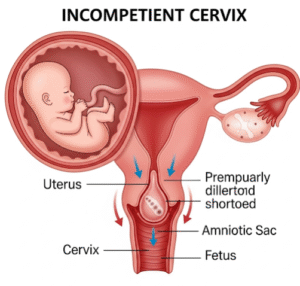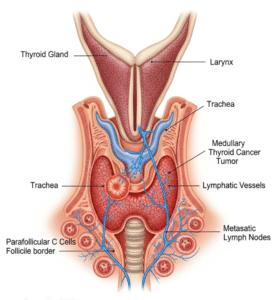Overview
Brucellosis is a bacterial infection caused by Brucella species, primarily affecting humans through direct contact with infected animals, consumption of contaminated animal products, or inhalation of aerosols. It is a zoonotic disease, meaning it spreads from animals to humans, and can cause prolonged fever, fatigue, joint pain, and organ involvement.
In Korea, brucellosis is considered a rare but reportable infectious disease, primarily associated with occupational exposure in farmers, veterinarians, and laboratory workers. Korean healthcare emphasizes early diagnosis, antibiotic therapy, and preventive measures to reduce transmission and complications.
What is Brucellosis?
Brucellosis is caused by Gram-negative bacteria of the genus Brucella, which invade the reticuloendothelial system, affecting organs such as the liver, spleen, bone marrow, and lymph nodes.
There are several species of Brucella that can infect humans:
- Brucella melitensis – from goats and sheep, most virulent
- Brucella abortus – from cattle
- Brucella suis – from pigs
- Brucella canis – from dogs
The bacteria can survive within white blood cells, leading to chronic infection and systemic symptoms. Brucellosis is also known as Malta fever or Mediterranean fever in some regions due to its historical prevalence.
Symptoms
Symptoms usually appear 1–4 weeks after exposure, though chronic cases can develop months later. Common symptoms include:
- Fever, often intermittent and sometimes with night sweats
- Fatigue and malaise
- Muscle and joint pain, particularly in the back, hips, and knees
- Headache
- Loss of appetite and weight loss
- Chills and sweating
- Enlarged liver, spleen, or lymph nodes in some cases
- Depression and sleep disturbances may occur in chronic cases
- Complications can lead to endocarditis, osteoarticular infection, or neurological involvement
Causes
Brucellosis is caused by infection with Brucella bacteria, transmitted primarily through:
- Consumption of unpasteurized milk, cheese, or other dairy products from infected animals
- Direct contact with infected animals through cuts, scratches, or handling birth products
- Inhalation of aerosols containing Brucella, especially in laboratory or slaughterhouse settings
- Human-to-human transmission is extremely rare, but documented in blood transfusion or organ transplantation
The bacteria invade the bloodstream and lymphatic system, evading immune defenses and causing systemic infection.
Risk Factors
- Occupational exposure: farmers, veterinarians, laboratory workers, abattoir employees
- Consumption of unpasteurized dairy products
- Travel to or residence in endemic areas
- Handling infected animals without protective equipment
- Immune suppression, increasing susceptibility to severe or chronic infection
Complications
Without timely treatment, brucellosis can lead to serious complications, including:
- Osteoarticular involvement: arthritis, spondylitis, sacroiliitis
- Endocarditis – infection of heart valves
- Hepatosplenomegaly – enlarged liver and spleen
- Chronic fatigue and depression
- Neurological complications such as meningitis or encephalitis
- Relapse due to incomplete or inadequate antibiotic therapy
Prevention
Preventive strategies focus on avoiding exposure to Brucella bacteria:
- Consume only pasteurized milk and dairy products
- Use protective clothing and gloves when handling animals or animal products
- Vaccinate livestock in endemic areas to reduce infection risk
- Follow laboratory biosafety protocols when handling Brucella cultures
- Practice good hand hygiene after contact with animals
- Avoid raw or undercooked meat from potentially infected animals
Korean public health guidelines emphasize education for high-risk populations, strict control measures in farms, and proper hygiene practices in laboratories.
Treatment Options in Korea
Diagnosis
Accurate diagnosis involves a combination of clinical evaluation, laboratory tests, and imaging:
- Medical history including occupational exposure or ingestion of unpasteurized dairy
- Physical examination focusing on fever, joint pain, and organ enlargement
- Blood cultures to isolate Brucella bacteria
- Serological tests, such as the Rose Bengal test or ELISA, to detect antibodies
- PCR tests for rapid detection of bacterial DNA
- Imaging (X-rays, MRI) to evaluate osteoarticular or organ involvement
Medical Management
Treatment consists of prolonged antibiotic therapy, often combining two or more antibiotics to prevent relapse:
- Doxycycline combined with rifampin for at least 6 weeks
- Streptomycin or gentamicin in severe or complicated cases
- Trimethoprim-sulfamethoxazole as an alternative in children or pregnant women
- Analgesics and anti-inflammatory drugs to manage pain and fever
- Hospitalization may be required for severe complications such as endocarditis or neurobrucellosis
Supportive Care
- Rest and hydration to aid recovery
- Nutritional support to maintain strength and immunity
- Monitoring for relapse through follow-up blood tests and symptom evaluation
- Physical therapy for joint or spinal involvement to restore mobility and function
Prognosis
With early diagnosis and proper antibiotic therapy, brucellosis has a favorable prognosis:
- Most patients recover fully within weeks to months
- Chronic or relapsing brucellosis can occur if treatment is incomplete or delayed
- Korean hospitals provide comprehensive care, including monitoring, rehabilitation, and counseling for high-risk patients
- Preventive measures and public health interventions significantly reduce the risk of new infections
In Korea, advanced diagnostic tools, effective antibiotic regimens, and awareness programs ensure that brucellosis is managed efficiently, minimizing complications and promoting full recovery for affected individuals.













